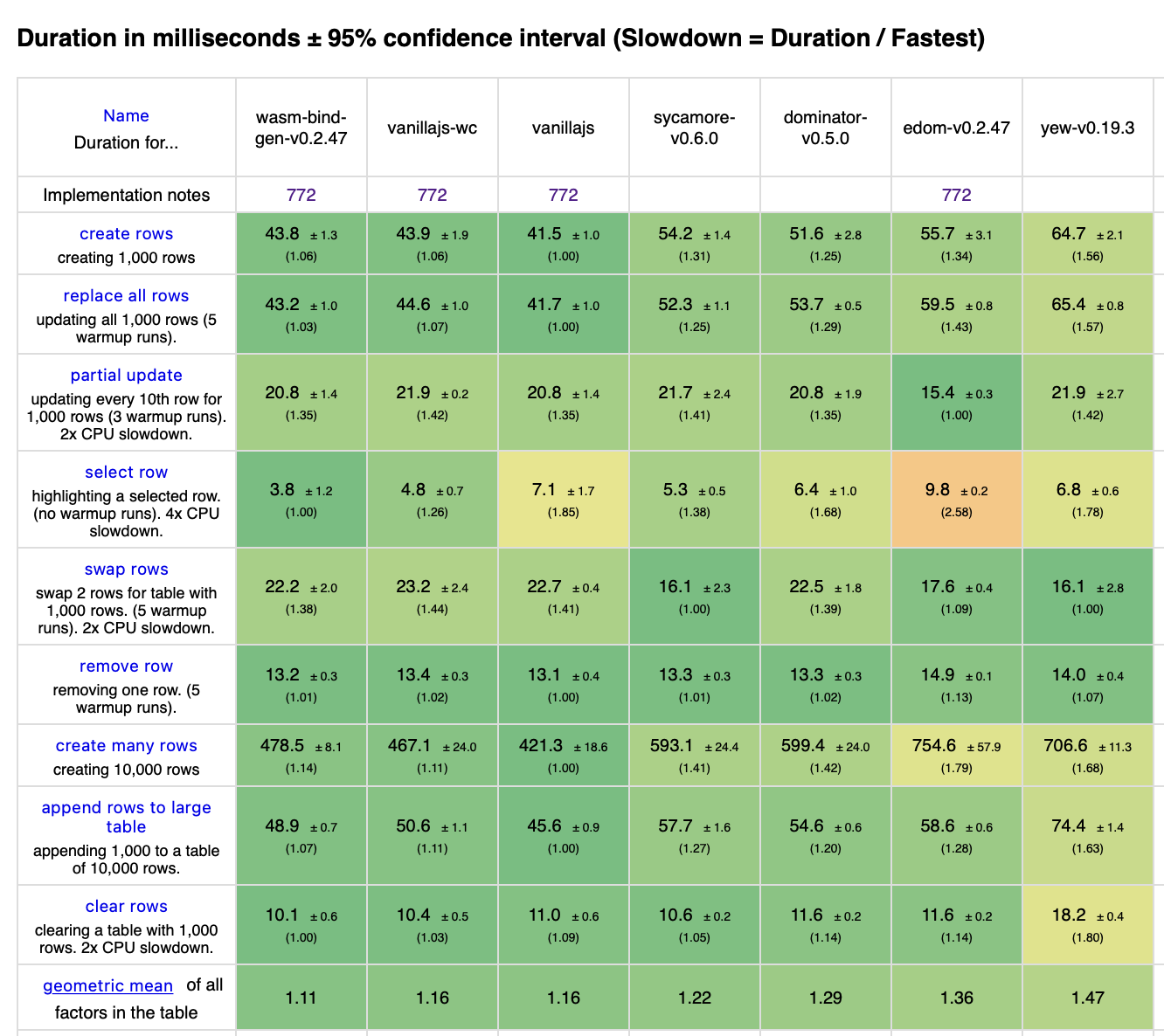It builds up VDOM for not having to run too many DOM operations, but as it runs every time any change is executed, it allows for a simple programming model without message passing / callbacks / signals, just like EGUI.
The render function is called once for creating the initial web page, and then twice for each event:
- once for computing the side effects of the event
- once more for rendering the changes that happened by modifying the state (variables)
(in examples/demo directory):
use edom;
use wasm_bindgen::prelude::wasm_bindgen;
#[wasm_bindgen(start)]
pub fn demo() {
let mut name = "Arthur".to_string();
let mut age:f64 = 42.0;
edom::wasm::render(move |mut root| {
root.h1().text("My edom application");
root.div(|div| {
div.text("Your name: ");
div.text_input(&mut name);
});
root.div(|div| {
div.range_input(&mut age, 0.0, 120.0);
div.number_input(&mut age).min(0.0).max(120.0);
div.text("age");
});
if root.button("Click each year").clicked() {
age+=1.0;
}
root.br();
root.text(format!("Hello '{}', age {}", name, age).as_str());
});
}
For a more complex example check TODOMVC



